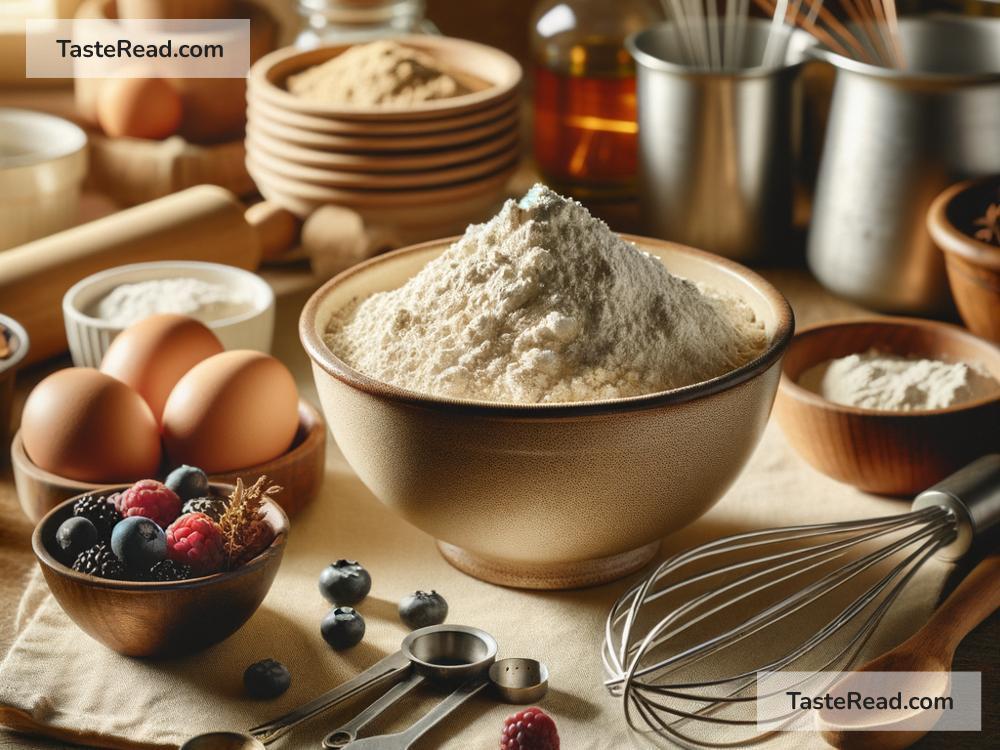How to Bake with Alternative Flours: A Simple Beginner’s Guide
If you’ve ever tried baking with alternative flours, you know it can be quite different from baking with regular all-purpose flour. But don’t worry—once you understand the basics, it opens up an exciting world of flavors, textures, and healthier options. Whether you’re avoiding gluten, exploring healthier substitutes, or simply experimenting in the kitchen, this guide will help you bake with alternative flours like a pro.
What Are Alternative Flours?
Alternative flours are simply flours made from sources other than wheat. They can come from nuts, seeds, grains, or even vegetables. Here are some common types of alternative flours:
- Almond Flour: Made from finely ground almonds, it’s naturally gluten-free and has a nutty flavor.
- Coconut Flour: Made from dried coconut flesh, it’s low-carb, high-fiber, and absorbs a lot of moisture.
- Oat Flour: Made by grinding oats, it’s mild in flavor and easy to make at home.
- Chickpea Flour: Made from dried chickpeas (garbanzo beans), it works well in savory recipes.
- Buckwheat Flour: Despite its name, it isn’t related to wheat and is naturally gluten-free.
- Rice Flour: Made from ground rice, it’s often used for gluten-free baking.
- Cassava Flour: Made from cassava root, it’s similar to wheat flour and great for gluten-free baking.
Each flour has unique properties, so learning how to use them is key.
Why Use Alternative Flours?
There are many reasons to bake with alternative flours:
- Health Benefits: Some alternative flours, like almond or coconut flour, are lower in carbohydrates and packed with nutrients.
- Dietary Restrictions: Gluten-free flours are essential for people with celiac disease or gluten sensitivity.
- Unique Flavors: Alternative flours can add unique tastes and textures to baked goods.
- Experimentation: It’s fun to try new ingredients and discover fresh ways to create your favorite recipes!
How to Get Started with Alternative Flours
Baking with alternative flours isn’t always a one-to-one swap for regular flour. Here are some helpful tips to get started:
1. Understand the Properties
Different flours behave differently in recipes. For example:
– Almond flour doesn’t rise like wheat flour because it lacks gluten. You’ll need extra binders, like eggs or xanthan gum.
– Coconut flour absorbs a lot of liquid, so you’ll use less flour and add more wet ingredients.
– Rice flour can make baked goods crumbly, so pairing it with another flour often helps improve texture.
Take time to learn how your chosen flour reacts in recipes.
2. Choose Recipes Designed for Alternative Flours
Many alternative flours work best in recipes specifically created for them. For instance, almond flour is excellent for cakes, cookies, and pancakes, while chickpea flour shines in savory dishes like flatbreads or crackers. Starting with tested recipes will save you frustration.
3. Mix Flours for Better Texture
Sometimes, combining alternative flours works better than using just one. For instance, mixing almond flour with coconut flour can improve the texture of gluten-free baked goods. This is because each flour compensates for the other’s weaknesses—for example, almond flour adds richness, while coconut flour absorbs moisture.
You can also try pre-made gluten-free flour blends, which often include a mix of alternative flours and binders (like xanthan gum) for balanced baking.
4. Add Binders
Unlike wheat flour, many alternative flours lack gluten, the protein that gives baked goods structure and elasticity. To fix this, you’ll need to add binding agents. Common binders include:
– Eggs
– Chia seeds or ground flaxseeds (mixed with water to form a gel)
– Xanthan gum or guar gum
Binders help hold your batter together and improve texture.
5. Experiment and Adjust
Baking with alternative flours may take some trial and error. If your first batch doesn’t turn out perfectly, don’t give up! Here are common adjustments:
– If your baked goods are too dense, try adding more liquid or leavening agents (like baking soda or baking powder).
– If they’re too crumbly, add more binder or mix in another flour for better texture.
– Taste as you experiment—some flours, like chickpea flour, have strong flavors that may need balancing.
Alternative Flours for Specific Recipes
Here’s a quick guide to match alternative flours with different types of baked goods:
- Cookies: Almond flour and oat flour work well for soft, chewy cookies.
- Cakes: Coconut flour and almond flour create moist cakes when combined with eggs.
- Bread: Use a mix of rice flour, sorghum flour, and binding agents for gluten-free bread.
- Pancakes: Almond flour or buckwheat flour make fluffy, flavorful pancakes.
- Pizza Crust: Chickpea flour or cassava flour create firm, crusty bases.
Tips to Succeed with Alternative Flours
- Measure Carefully: Alternative flours tend to be more finicky than wheat flour, so be precise with your measurements.
- Start Small: If you’re new to baking with alternative flours, try substituting only part of the regular flour in a recipe (e.g., use half almond flour, half all-purpose flour). This helps you ease into the process.
- Store Properly: Many alternative flours, like almond and coconut flour, are prone to spoilage. Keep them in airtight containers in the fridge or freezer.
Final Thoughts
Baking with alternative flours is an adventure worth exploring! While it may take some time to get used to their unique properties, the rewards are well worth it. You’ll create baked goods that are healthier, flavorful, and fit your dietary preferences.
So, the next time you’re in the mood to bake, don’t reach for regular flour—try experimenting with almond, coconut, oat, or chickpea flour. You might discover your next favorite recipe!
Happy baking!


